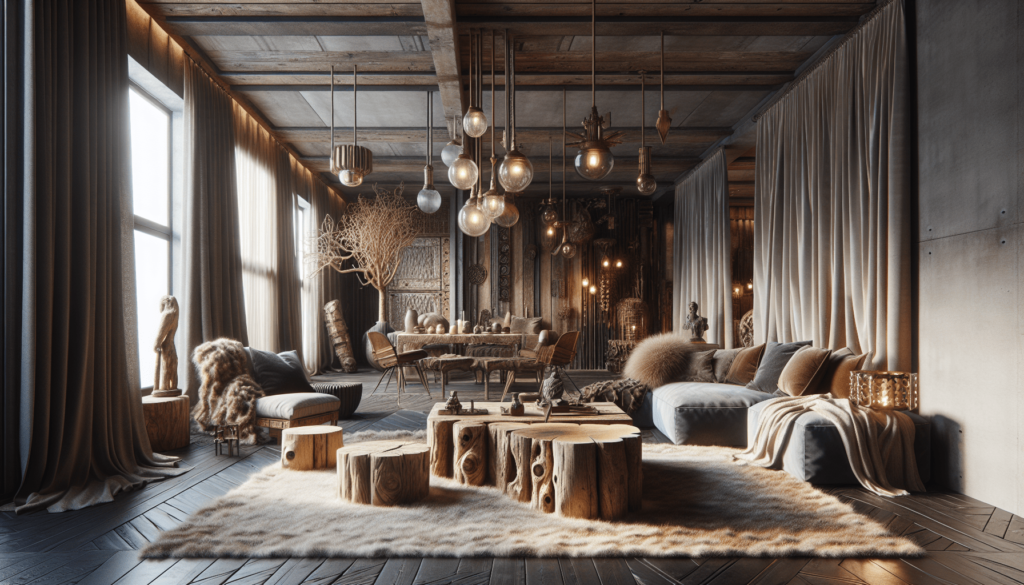Welcome to an insightful look into the world of interior design, where we will explore the transformative power of textural layers in creating a dynamic and inviting space. By incorporating a variety of textures such as sleek metals, plush fabrics, and rough wood finishes, you can add depth and dimension to your home decor. Whether you prefer a modern minimalist look or a cozy rustic feel, understanding how to play with different textures will allow you to elevate your interior design to a whole new level. Join us on this journey as we uncover the secrets to creating a visually captivating and tactilely engaging living environment. Have you ever walked into a room and immediately felt a sense of comfort and warmth, simply from the way it looks and feels? Chances are, that room had a well-thought-out design with a careful consideration of textural layers. Textural layers play a crucial role in interior design, adding depth, interest, and a sense of coziness to a space. In this guide, we’ll explore the power of textural layers in interior design and how you can use them to create a beautiful and inviting space in your home.

Understanding Textural Layers
Textural layers in interior design refer to the various materials and finishes used in a space to create visual and tactile interest. By incorporating a mix of textures, you can add depth and dimension to a room, making it feel more dynamic and engaging. Textures can range from rough and tactile to smooth and sleek, and everything in between.
When you introduce different textures into a space, you create a rich visual experience that stimulates the senses and adds character to the room. Think of it as adding layers of flavor to a dish – each texture contributes something unique and enhances the overall experience.
Why Textural Layers Matter
Adding textural layers to your interior design is more than just a stylistic choice – it’s a way to create a harmonious and balanced environment that feels inviting and comfortable. Textures have the power to evoke emotions, set the mood, and create a specific atmosphere in a room.
Imagine walking into a room with all smooth, shiny surfaces – it may look sleek and modern, but it can also feel cold and sterile. Now, picture that same room with a mix of textures like plush velvet, rustic wood, and soft wool – suddenly, it feels much more welcoming and cozy.
By incorporating textural layers into your design, you can transform a space into a place that not only looks good but also feels good to be in.
How to Incorporate Textural Layers
Now that we understand the importance of textural layers in interior design, let’s explore some practical ways to incorporate them into your space. Whether you’re starting from scratch or looking to refresh your current design, these tips will help you create a layered and visually interesting environment.
1. Mix Different Materials
One of the easiest ways to introduce textural layers into your design is by mixing different materials. Consider combining smooth surfaces like glass or metal with more tactile elements like wood, leather, or fabric. This juxtaposition of textures creates a dynamic and visually appealing look that adds a sense of richness to the space.
For example, you can pair a sleek glass coffee table with a plush velvet sofa, or a rustic wooden dining table with modern acrylic chairs. The key is to balance out the textures so that they complement each other and create a cohesive design.
2. Play with Patterns
Patterns are another great way to add textural interest to a room. Whether it’s a bold geometric print, a delicate floral motif, or a classic stripe, patterns can bring depth and visual intrigue to a space. Mix and match different patterns on upholstery, rugs, curtains, and accessories to create a layered and cohesive look.
When working with patterns, be mindful of scale and color. A good rule of thumb is to vary the scale of patterns – pair a large-scale pattern with a small-scale one to create balance. Additionally, stick to a cohesive color palette to tie everything together and prevent the space from feeling too busy.
3. Layer Soft Furnishings
Soft furnishings like cushions, throws, and rugs are an easy way to introduce texture into a room. Opt for fabrics with different tactile qualities, such as velvet, linen, wool, or faux fur, to create a cozy and inviting atmosphere. Layering cushions of varying sizes, shapes, and textures on a sofa or bed adds visual interest and warmth to the space.
When choosing soft furnishings, don’t be afraid to mix and match colors and patterns. Experiment with different combinations to find a look that suits your style and personality. Remember, there are no hard and fast rules when it comes to layering – trust your instincts and have fun with it!
Textural Layer Ideas for Different Rooms
Now that you have a good understanding of how to incorporate textural layers into your interior design, let’s explore some specific ideas for different rooms in your home. From the living room to the bedroom, we’ll cover various ways to add texture and interest to each space.
Living Room
The living room is often the heart of the home, where you gather with family and friends to relax and unwind. To create a cozy and welcoming atmosphere in your living room, consider the following textural layer ideas:
- Mix a plush wool rug with leather armchairs for a luxurious and inviting seating area.
- Add a chunky knit throw and velvet cushions to a linen sofa for a touch of warmth and comfort.
- Incorporate a mix of materials like wood, metal, and glass in your coffee table and side tables for a balanced and eclectic look.
Bedroom
Your bedroom is a personal sanctuary where you should feel relaxed and at ease. To create a soothing and inviting environment, try these textural layer ideas:
- Layer different bedding textures like crisp cotton sheets, a cozy quilt, and a soft duvet cover for a sumptuous and restful sleep space.
- Invest in a plush wool rug or a faux fur throw to add warmth and softness to the room.
- Incorporate a mix of bedside tables in varying materials like wood, metal, or marble to create a visually interesting and eclectic look.
Dining Room
The dining room is a place where you come together to enjoy meals with loved ones, making it an important space to consider when it comes to textural layers. Here are some ideas for adding texture and interest to your dining room:
- Pair a rustic wooden dining table with upholstered dining chairs in a rich velvet or leather for a warm and inviting dining area.
- Add a statement chandelier made of textured materials like rattan, metal, or glass to create a focal point in the room.
- Incorporate a mix of table linens, like a linen tablecloth paired with cotton napkins, to add visual interest and texture to your dining table.
Conclusion
Incorporating textural layers into your interior design is a powerful way to create a beautiful and inviting space that reflects your personality and style. By mixing different materials, playing with patterns, and layering soft furnishings, you can add depth, interest, and warmth to any room in your home.
Remember, there are no strict rules when it comes to textural layers – trust your instincts, experiment with different textures, and have fun creating a space that feels uniquely yours. Whether you’re looking to refresh your current design or starting from scratch, textural layers are a surefire way to elevate your space and make it a place you love to be in.


